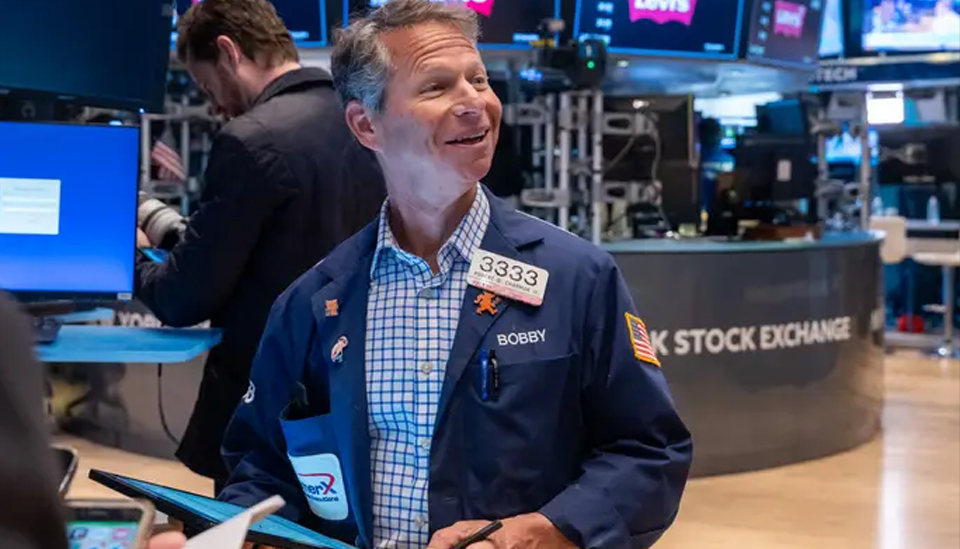The Dow Jones Industrial Average surged to new highs on Tuesday as the market rally broadened beyond major technology names, driven by hopes of impending interest rate cuts. The Dow jumped by 511 points, or 1.3%, setting a new intraday record. Meanwhile, the S&P 500 rose 0.4%, and the Nasdaq Composite hovered around its flatline.
Bank of America and Morgan Stanley saw significant gains, climbing more than 5% and 2% respectively, after reporting earnings that exceeded analyst expectations. These companies are among the latest to release quarterly results as the new reporting season begins.
Investors continued shifting from mega-cap technology stocks to small-cap stocks. While large tech companies have enjoyed significant gains due to optimism around artificial intelligence, small-cap stocks are perceived as likely beneficiaries of lower interest rates. The Russell 2000, which focuses on small caps, rose nearly 2%, marking its fifth consecutive day of gains, whereas the tech-heavy Nasdaq wavered. Notably, AI frontrunner Nvidia and software giant Microsoft each dropped over 1%.
Over the past week, the Russell 2000 has surged more than 10%, while the blue-chip Dow has gained over 3%. In contrast, the Nasdaq has seen little change.
“There’s a lot of momentum behind this rotation trade from big-cap tech into small caps and into the average stock,” said Ross Mayfield, investment strategist at Baird. “It’s a rotation, but it’s much more about the upside in the more cyclical sectors in the market than a referendum on AI’s long-term potential.”
This shift comes amid growing hopes that the Federal Reserve will start lowering interest rates, having successfully curbed inflation without significantly weakening the economy. According to the CME FedWatch tool, traders now see a 100% chance of a rate cut by September.
Retail sales data released on Tuesday indicated a resilient economy. June sales remained unchanged, defying economists’ expectations of a 0.4% decline. Excluding autos, sales increased by 0.4%, surpassing the 0.1% consensus forecast.
“This data should be positive for markets,” said Quincy Krosby, chief global strategist at LPL Financial. “Investors prefer the launch of a Fed easing cycle to begin with a still solid economic backdrop.”
On Tuesday, more than one in seven stocks in the S&P 500 reached new 52-week highs. Notable companies hitting this milestone included:
- Electronic Arts, trading at levels not seen since September 2021
- T-Mobile US, at all-time highs since the MetroPCS IPO in April 2007
- Goldman Sachs, at all-time high levels since its IPO in May 1999
- S&P Global, at all-time high levels dating back to 1972
- L3Harris Technologies, at levels not seen since November 2022
- Motorola Solutions, at all-time highs since it began trading post the Motorola Mobility split
- Duke Energy, at levels not seen since September 2022
- Fair Isaac, at all-time highs since its NYSE listing in 1986
- Royal Caribbean, at all-time high levels since its IPO in April 1993
- Garmin, at levels not seen since September 2021
- Conversely, only four stocks were trading at their 52-week lows: Lululemon, Starbucks, Lamb Weston, and Solventum.
The small-cap Russell 2000 index jumped 2% on Tuesday, continuing its upward trend for the fifth consecutive day. Leading Tuesday’s gains were AngioDynamics, PaySign, Big Lots, and Pacific Biosciences of California, all of which surged more than 10%.
Investors are moving into previously overlooked market segments as cooling inflation data from last week bolstered bets that the Federal Reserve might soon cut interest rates and avoid a recession. Small-cap stocks, typically more sensitive to economic fluctuations and market sentiment, stand to benefit significantly from falling rates.
Source CNBC

